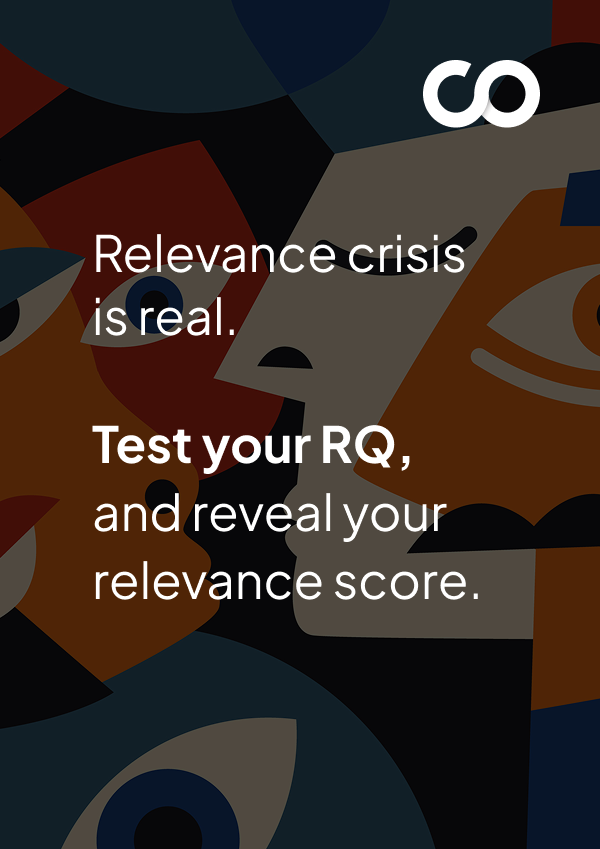Technology Consulting Companies
Information Technology Strategy and Consulting Services

From IT Overheads to a Scalable Growth Engine
An outdated or fragmented IT strategy hinders decision-making, increases operational costs, and restricts your ability to scale. Disconnected systems and reactive planning make it more challenging to innovate, thereby putting customer engagement and market competitiveness at risk. When technology decisions are made in silos, opportunities to harness emerging tools for transformation often get missed.
Codewave’s IT strategy and consulting services offer SMEs a clear technology roadmap aligned with their business objectives. Our consulting services span CX-UX strategy, AI adoption planning, digital advancement consulting, software modernization, and more. Each engagement is designed to help you make technology investments that directly impact adoption, engagement, and retention.
We combine design thinking with proven frameworks to find bottlenecks, streamline workflows, and design scalable solutions. Each recommendation moves smoothly from strategy to execution. These include implementing AI-powered analytics with TensorFlow and PyTorch, building intuitive customer-facing experiences with React and Flutter, or architecting secure, cloud-native systems on AWS and Azure.

Here’s how you can benefit:
120%
Higher Speed & Agility
80%
Lower Downtimes & Operational Costs
5x
Higher Customer Engagement
1.5x
Return on Investment
Download The Master Guide For Building Delightful, Sticky Apps In 2025.
Build your app like a PRO. Nail everything from that first lightbulb moment to the first million.
IT Consulting That Turns Strategy Into Measurable Impact
End-to-end IT consulting; from optimizing CX-UX and AI adoption to modernizing infrastructure, securing systems, and aligning your tech investments for measurable growth.
Many SMEs launch digital platforms expecting strong adoption, only to see users abandon key flows. Complex navigation, slow load times, and inconsistent layouts disrupt the journey and reduce repeat visits. These issues often go unnoticed until analytics reveal high bounce rates or low conversion from critical touchpoints.
Our experts combine diagnostic tools like GA4, Hotjar, and Mixpanel with usability testing to map exactly where drop-offs occur. Using this data, we recommend redesigning layouts in Figma, improving performance with optimized assets, and validating changes through structured A/B testing. The goal is to simplify user decision-making and remove every point of friction.
This approach yields higher engagement, lower bounce rates, and measurable increases in task completion rates for key business actions, such as sign-ups, checkouts, or bookings.
Example: A subscription app notices a high drop-off rate during the onboarding process. We will recommend tracking user behavior with Hotjar, identifying friction points in form steps, and redesigning the flow to optimize load performance. This will reduce abandonment and improve subscription conversions.
Without a structured IT budget, SMEs often overspend on underutilized tools, such as redundant SaaS subscriptions, duplicate analytics platforms, or inactive cloud instances, or fail to invest in critical systems that drive growth. This leads to inefficiencies and missed opportunities.
We utilize FinOps tools, including AWS Cost Explorer for spend analysis, Azure Cost Management for budget tracking, and CloudHealth for optimization to create budgets aligned with business priorities. Our process involves tagging resources in AWS or Azure for accountability, modelling usage scenarios to forecast future spend, and identifying areas for cost reduction.
Our recommendations are aligned to ensure that funding is allocated to high-impact technologies such as UiPath for automation, or Snowflake for scalable analytics. This enables disciplined spending, improved forecasting, and maximized value from IT investments.
Example: A SaaS startup overspends on unused software licenses while underfunding automation. We will audit their current spend, recommend retiring low-value software, and reallocate funds to high-impact automation solutions. This will improve efficiency and maximize ROI.
Outdated infrastructure and siloed systems hinder SMEs’ ability to respond quickly to market shifts or handle increased demand. Slow integrations and manual data syncing result in delayed insights and inconsistent customer experiences.
We recommend rebuilding systems with Kubernetes to run and manage applications efficiently, AWS Lambda to handle scaling without managing servers, and Kafka to process data in real-time. Moreover, IoT and edge computing enable the instant tracking of assets, while API gateways maintain secure connections between different applications. This creates a technology setup that can adapt quickly to changes without losing reliability.
Ultimately, this enables you to scale up during peak demand without service degradation, maintain accurate data across all channels, and respond to customer needs in real-time.
Example: A logistics provider experiences inaccurate delivery ETAs due to delayed tracking updates. We will recommend implementing AWS IoT fleet tracking, enabling edge-based processing, and integrating updates into their customer portal. This will improve ETA accuracy, reduce delivery delays, and enhance customer satisfaction.
Unaddressed security vulnerabilities and non-compliance with regulations put sensitive data and business credibility at risk. A breach or failed audit can cause severe financial and reputational damage.
We conduct comprehensive, end-to-end risk assessments using tools such as Qualys and Rapid7 to identify system weaknesses. We also suggest mapping data flows across applications and infrastructure to identify where sensitive information is stored and transmitted. Furthermore, we recommend aligning operations with ISO 27001, NIST CSF, and relevant US compliance standards.
We also create a threat model using the Microsoft Threat Modeling Tool, scan for vulnerabilities with Nessus, and suggest enforcing strong access controls via Okta or AWS IAM.
All of these combined can help you reduce the likelihood of breaches, strengthen your compliance posture, and ensure smoother audit outcomes.
Example: A healthcare SME risks non-compliance due to inconsistent data handling practices. We will recommend auditing workflows, encrypting sensitive data, and implementing access controls that align with regulatory standards. This will reduce vulnerabilities and ensure compliance.
Packaged software often lacks the flexibility to meet unique operational needs. Teams end up creating inefficient workarounds that waste time and reduce productivity.
As part of our Custom Software Development Consulting service, we thoroughly analyze your requirements and draft precise specifications tailored to your needs. We recommend designing software customized to your processes using Java, .NET, or Node.js for the backend, and React, Angular, or Vue.js for the frontend.
For scalability, we adhere to clean architecture principles, utilize Docker to package applications, and manage them with Kubernetes. We also recommend ongoing updates and maintenance using CI/CD pipelines, such as GitHub Actions or Jenkins.
This approach will provide you with software that aligns with your workflows, enhances efficiency, and eliminates dependency on unsuitable tools.
Example: A lending startup faces delays because its off-the-shelf loan system doesn’t support its custom underwriting rules. We will suggest designing and building a platform tailored to their lending process, automating document flows and review stages. This will expedite approvals and create a more seamless borrower experience.
Without predictive insights, SMEs operate reactively, addressing customer churn, inventory shortages, or workflow bottlenecks only after they’ve hurt revenue. Relying solely on manual processes slows response time and limits the ability to scale.
To combat this, we design AI roadmaps based on business objectives, recommending the integration of TensorFlow, PyTorch, and MLOps pipelines for ongoing optimization and improvement. Solutions range from predictive demand forecasting and customer churn prediction to AI-driven chatbots and intelligent routing.
Our suggested implementation process ensures models are fed clean, reliable data, and outcomes are embedded into day-to-day decision-making systems. The result is a business that anticipates issues, automates repetitive tasks, and consistently makes data-driven decisions, thereby reducing operational errors and enhancing market responsiveness.
Example: A retail chain struggles with frequent product stockouts, which negatively impact seasonal sales. We will provide them with insight into deploying demand forecasting models in TensorFlow and linking them to automated replenishment triggers. This will help them reduce stockouts, optimize inventory, and stabilize sales performance.
Legacy systems are expensive to maintain and limit scalability. Furthermore, migrating to the cloud without a clear plan can lead to downtime, data loss, and unexpected costs.
As part of our Cloud and Data Migration strategy, we assess your current infrastructure and map dependencies, including databases, APIs, and third-party integrations. We recommend executing migrations using AWS Migration Hub or Azure Migrate.
We also suggest using blue-green or canary release methods, which involve rolling out the new system gradually to minimize disruption. Our recommendations also include embedding security controls, such as AWS Identity and Access Management (IAM), and cost controls like AWS Cost Explorer from the start.
This transition reduces infrastructure costs, improves system reliability, and positions your business to scale efficiently.
Example: An insurance company faces high hosting costs and frequent downtime on its on-premise servers. We will recommend that they containerize their applications, securely migrate databases to AWS, and set up cost monitoring. This will improve uptime, enhance security, and lower operational costs.
Our No-Guesswork Approach to IT Strategy Success
We begin with in-depth discovery sessions with key stakeholders to pinpoint the challenges your business is facing. Through design thinking workshops, we examine existing workflows, systems, and processes to identify areas for improvement and inefficiencies.
This includes mapping user journeys and analyzing system performance data to identify bottlenecks, such as slow processing times, outdated systems, or team misalignment.
Our team gathers direct feedback through interviews, surveys, and workshops to gain a comprehensive understanding of the issues at hand. By identifying root causes, such as misconfigured software or data silos, we ensure that our solutions target the underlying problems, not just their symptoms, setting the stage for long-term success.
We conduct a full inventory of your IT ecosystem, mapping every application, database, integration, and infrastructure component. This includes assessing CRM systems, ERP modules, analytics tools, collaboration suites, and custom software. We document licensing models, usage frequency, integration points, and maintenance overheads while analyzing adoption rates across teams.
Furthermore, we flag redundant solutions, identify underutilized features for re-engineering, and review security posture, compliance alignment, and data flows for vulnerabilities or bottlenecks. The result is a clear, data-driven blueprint of your tech stack, outlining cost-saving opportunities, performance improvements, and a solid foundation for a future-ready IT strategy.
We collaborate with your leadership and operational teams to develop a results-driven IT roadmap that aligns with your business goals and measurable KPIs. The process begins by defining clear targets such as reducing downtime, improving order accuracy, or cutting operational costs. The roadmap is structured into phased initiatives, starting with quick wins that deliver immediate ROI while setting the stage for larger, more comprehensive transformations.
Each phase details required resources, skill sets, dependencies, timelines, and risk assessments. Technical planning covers data architecture upgrades, system integrations, automation workflows, and UI enhancements, while change management ensures smooth adoption across teams. The outcome is a concise, actionable blueprint that ties every investment to efficiency gains, cost savings, and scalable growth.
We translate the roadmap into build-ready specs by drafting user stories with clear acceptance criteria, mapping service blueprints, and defining success metrics. UX progresses from wireframes to clickable prototypes, supported by a comprehensive design system and compliance with accessibility standards.
Engineering defines non-functional requirements, API contracts, and integration points. A detailed test plan spans unit to end-to-end testing, using prepared test data in isolated environments. Our team validates prototypes with target users, iterates on them for usability, and approves them according to a “Definition of Ready.”
During build, CI pipelines run automated tests and security checks, with analytics and telemetry embedded. Before release, we run performance, accessibility, and security scans, complete UAT, and roll out in stages (beta/canary) while monitoring KPIs. This ensures a low-risk launch that meets usability, performance, and business goals.
We execute the strategy in structured phases to ensure scalability from the start. We set up the Infrastructure in AWS or Azure with auto-scaling, load balancing, and high-availability zones. Furthermore, we automate workflows using Microsoft Power Automate or custom scripts, along with process mapping, to eliminate redundancies.
Our team configures Power BI dashboards or similar BI tools with role-based access for real-time insights. Each feature goes live through CI/CD pipelines, and our experts manage infrastructure using Infrastructure as Code for consistency. Continuous monitoring tracks performance, security, and costs, with alerts for anomalies. Capacity planning models forecast future loads, ensuring the system scales without costly rework. This process establishes a resilient IT foundation that is ready for current demands and future growth.
Post-launch, our experts maintain full observability with metrics, logs, and alerts tied to service and user KPIs. They run weekly reviews to track conversion, latency, and error rates, following runbooks for quick fixes.
FinOps teams optimize cloud spend through tagging, rightsizing, and autoscaling. Security teams apply patches, perform vulnerability scans, and run disaster recovery drills. They monitor data pipelines for SLA compliance and quality to ensure accurate analytics. Product analysts conduct A/B tests, refine features, and retire low performers.
Quarterly reviews realign priorities, ensuring the IT ecosystem stays secure, efficient, and ready for changing business needs.
Our Trusted Tech Arsenal for High-Impact IT Consulting
| Category | Tools and Technologies |
| User Behaviour & Journey Mapping | GA4, Hotjar, Mixpanel |
| UX/UI Design & Prototyping | Figma, Adobe XD |
| Performance & A/B Testing | Google Optimize, Optimizely |
| IT Spend & Resource Tracking | AWS Cost Explorer, Azure Cost Management, CloudHealth |
| Infrastructure Modernisation | Kubernetes, AWS Lambda, Apache Kafka |
| Security & Compliance | Qualys, Rapid7, Nessus, Okta, AWS IAM |
| Custom Software Development | Java, .NET, Node.js, React, Angular, Vue.js |
| Automation & CI/CD | UiPath, GitHub Actions, Jenkins |
| AI & Predictive Analytics | TensorFlow, PyTorch, MLOps Pipelines |
| Cloud & Data Migration | AWS Migration Hub, Azure Migrate |
Proven Impact, Backed by Businesses Across Industries
See how companies have redefined efficiency and growth with our Information Technology Consulting services. From streamlining workflows and consolidating redundant tools to designing scalable cloud environments and automating key processes, they’re achieving faster decision-making, lower costs, and stronger security.
Explore our success stories and see what’s possible for your business.
We transform companies!
Codewave is an award-winning company that transforms businesses by generating ideas, building products, and accelerating growth.
A Network of Excellence. Our Clients.
Frequently asked questions
Select a firm with experience in your industry, proven case studies, and the necessary certifications, such as ISO 27001 or System and Organization Controls 2 (SOC 2). Check their security approach, client reviews, pricing clarity, and ability to deliver measurable results.
The cost of our IT consulting services depends on the scope, complexity, and specific needs of your project. Factors include the depth of consulting, the chosen technologies, and the scale of implementation. For an accurate quote, contact us to discuss your requirements.
We work across various sectors, including healthcare (HIPAA-compliant systems), retail (omnichannel integration), logistics (route optimization platforms), manufacturing (IoT-enabled monitoring), BFSI (secure fintech solutions), and education (scalable e-learning platforms). Each solution is customized to industry-specific challenges.
Codewave applies a design thinking-led approach to create practical, human-centred IT strategies. With 400+ successful projects across 15+ industries, we deliver faster results, cost efficiency, and solutions aligned with your business goals.
Latest thinking
Don't let tech gaps slow you down. Build an IT strategy that works.
Reach out now to get started






























































